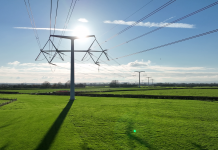 Consultant Andy Pace outlines the cost implications of Ofgem’s incoming changes to residual electricity network charges
Consultant Andy Pace outlines the cost implications of Ofgem’s incoming changes to residual electricity network charges
Ofgem published a consultation on its Targeted Charging Review ‘minded to’ decision and draft impact assessment before Christmas.
This minded to decision looks primarily at how the residual element of network charges are recovered both at transmission and distribution.
No avoidance
Residual charges can be considered as the balancing element of network charges that allow network companies to recover the correct amount of revenue. The principle adopted by Ofgem is that the residual charge element should not be avoidable by consumers as there is no subsequent cost saving for network companies.
Disconnect or pay
Ofgem’s preferred approach is to recover the residual element of network charges as a fixed charge from demand customers only (with recovering residual charges on a capacity basis as a second option). This means that any consumer of electricity will have to pay a fixed contribution each year to the residual network charge. This can only be avoided by disconnecting from the network.
The concept of fixed charges is not new. Most demand customers pay a fixed charge as part of their electricity bill. However, the minded to decision means that the fixed charge will now include the additional element of the residual charge at both transmission and distribution.
Triad revisited
The impact of this change varies by customer type and the contribution customers are making to the residual charge element under the current arrangements. At present, transmission network charges are recovered via the triad charge (levied on a customer’s consumption during the three highest half hours of national peak demand across the Winter, separated by 10 days).
Customers who manage their demand during the triad will currently not pay much towards the residual charge. At distribution, the residual is spread across the unit rates, so can be avoided by consumers reducing their consumption (e.g. by installing behind the meter generation).
The proposed new arrangements will see the total residual for transmission plus the total residual for each DNO area split by customer segments based on the net consumption of each segment.
The transmission residual charge will be the same across all DNO areas and the distribution residual charge will be specific to a DNO area. Once the total pot has been split, it is simply divided by the number of customers within each segment to determine a fixed charge that each customer in that segment will pay.
The customer segments are based on the Line Loss Factor Classes (LLFCs) used by DNOs for allocating distribution losses and applying use of system tariffs. The only exception is Extra High Voltage (EHV) customers who all have an individual LLFC and these customers will be grouped together as one customer segment.
Cost impact
Ofgem has published an impact assessment to show how these changes will impact different customer segments.
As a general rule, those customers who currently avoid, to some extent, the residual charge will pay more under the new arrangements (e.g. customers with behind the meter generation or those who reduce demand at time of triad).
As the total amount of money to be recovered is fixed, those customers who do not currently avoid the residual charge will see a reduction in the amount they pay.
The impact varies by the customer segment within which a customer falls combined with which DNO area they are situated and whether they currently manage their demand.
Who will pay more?
An average EHV customer connected in the Electricity North West area that currently does not import during the triad period will see transmission residual charges increase from £0 to £65k and distribution charges increase from £44k to £77k to give a total increase in the residual charge from £44k to £142k.
Who will pay less?
Conversely, an average EHV customer connected in the Electricity North West area that currently imports during the triad period will see their transmission residual charge decrease from £298k to £65k and their distribution charge increase from £44k to £77k to give a decrease in the total residual charge from £342k to £142k. (Note: the residual element of the EHV charge at distribution does not change as it is currently recovered within the capacity charge).
A High Voltage light industrial customer in Electricity North West area would experience a total decrease in their residual bill from £58k to £29k. The published impact analysis does not differentiate between those customers with or without onsite generation.
At the smaller end of the industrial market, a small non-domestic site in Electricity North West’s area would experience an increase in their total residual bill from £129 to £176 where onsite generation exists but a decrease from £369 to £176 where there is no onsite generation.
This summary provides an indication of the impact on business customers in one DNO area. The full impact analysis can be downloaded from Ofgem’s website.
Andy Pace is a director of consultancy Energy Potential.
Related stories:
Ofgem outlines ‘line rental for all’, further embedded benefit cuts
Constraint trading grid access and triad: Ofgem scopes major charging review
Ofgem consults on major networks charging review
Ofgem paves way for major change to energy system charges
Ofgem moots making firms pay network charges for onsite generation
Ofgem chief relishes ‘difficult’ charging review
Risk mismanagement: More suppliers will go bust
Click here to see if you qualify for a free subscription to the print magazine, or to renew.
Follow us at @EnergystMedia. For regular bulletins, sign up for the free newsletter.



